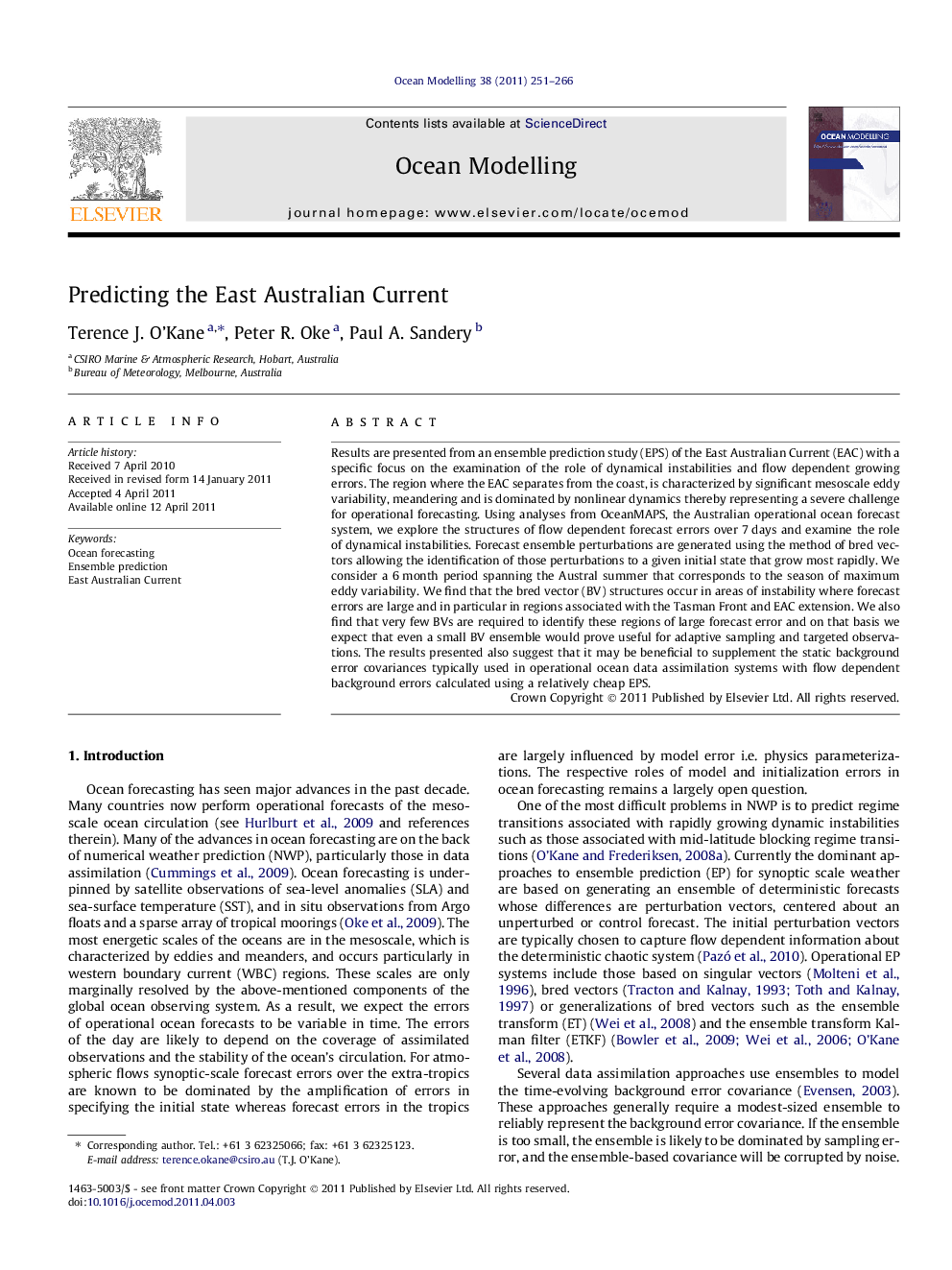| Article ID | Journal | Published Year | Pages | File Type |
|---|---|---|---|---|
| 4552299 | Ocean Modelling | 2011 | 16 Pages |
Results are presented from an ensemble prediction study (EPS) of the East Australian Current (EAC) with a specific focus on the examination of the role of dynamical instabilities and flow dependent growing errors. The region where the EAC separates from the coast, is characterized by significant mesoscale eddy variability, meandering and is dominated by nonlinear dynamics thereby representing a severe challenge for operational forecasting. Using analyses from OceanMAPS, the Australian operational ocean forecast system, we explore the structures of flow dependent forecast errors over 7 days and examine the role of dynamical instabilities. Forecast ensemble perturbations are generated using the method of bred vectors allowing the identification of those perturbations to a given initial state that grow most rapidly. We consider a 6 month period spanning the Austral summer that corresponds to the season of maximum eddy variability. We find that the bred vector (BV) structures occur in areas of instability where forecast errors are large and in particular in regions associated with the Tasman Front and EAC extension. We also find that very few BVs are required to identify these regions of large forecast error and on that basis we expect that even a small BV ensemble would prove useful for adaptive sampling and targeted observations. The results presented also suggest that it may be beneficial to supplement the static background error covariances typically used in operational ocean data assimilation systems with flow dependent background errors calculated using a relatively cheap EPS.
► First ensemble prediction study of the EAC using methods derived from operational NWP. ► Dynamical instabilities identify the spatial patterns of the fastest growing errors. ► A very small ensemble of bred vectors can suppress these errors. ► Forecast errors arise in regions corresponding to the Tasman front and EAC extension. ► BVs can identify where additional observations can be effectively targeted.
